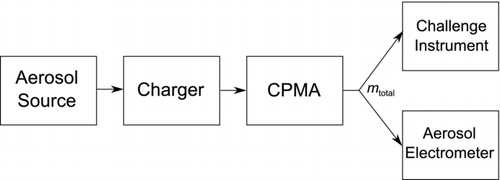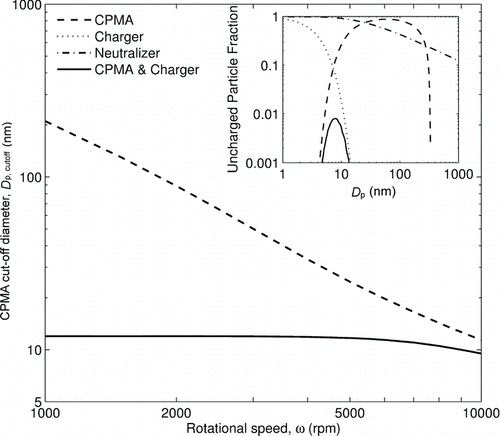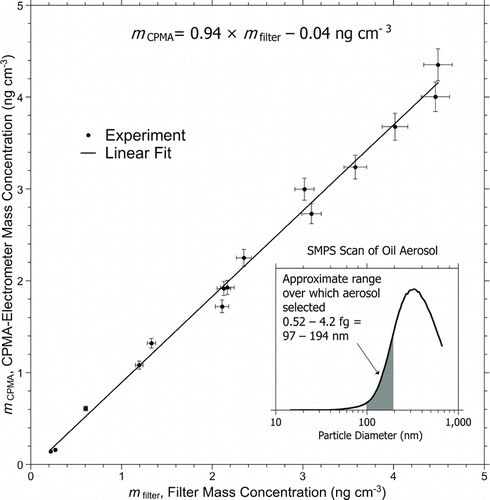Figures & data
FIG. 1 Proposed scheme—aerosol is charged, classified by mass:charge ratio by the CPMA, producing a stream of particles of total mass concentration m total, which is split and sampled by both an aerosol electrometer and a challenge instrument. To better match instrument flow rates, particle-free make-up air could be added before the splitter.

The cutoff diameter of unit density uncharged particles through a CPMA with radii of 60 mm and 61 mm, length of 200 mm, speed ratio of 0.97, and flow rate of 1.5 lpm, as a function of rotational speed, both with and without the unipolar charger described in the text upstream of the CPMA. The inset shows the uncharged particle fraction as a function of particle diameter for a CPMA rotating at 1000 rpm, a unipolar charger, a radioactive neutralizer, and downstream of a unipolar charger and CPMA in series.

FIG. 3 Mass concentration of silicone oil measured by the CPMA-electrometer method compared with gravimetric measurements. Error bars for the CPMA method are as taken from the analysis in the text, those for the filter paper assume 1% uncertainty for the flow and for each weighing—a coverage factor of 2 is assumed. The inset shows the spectral form of the oil aerosol.
